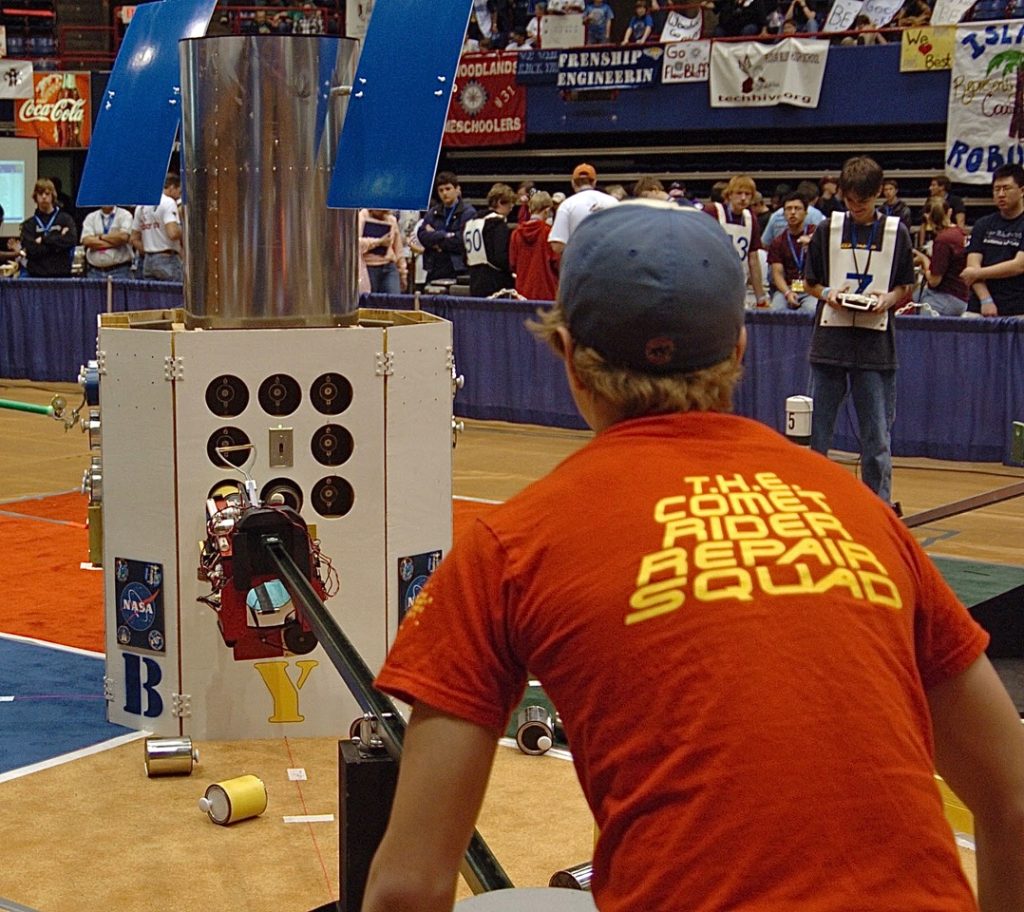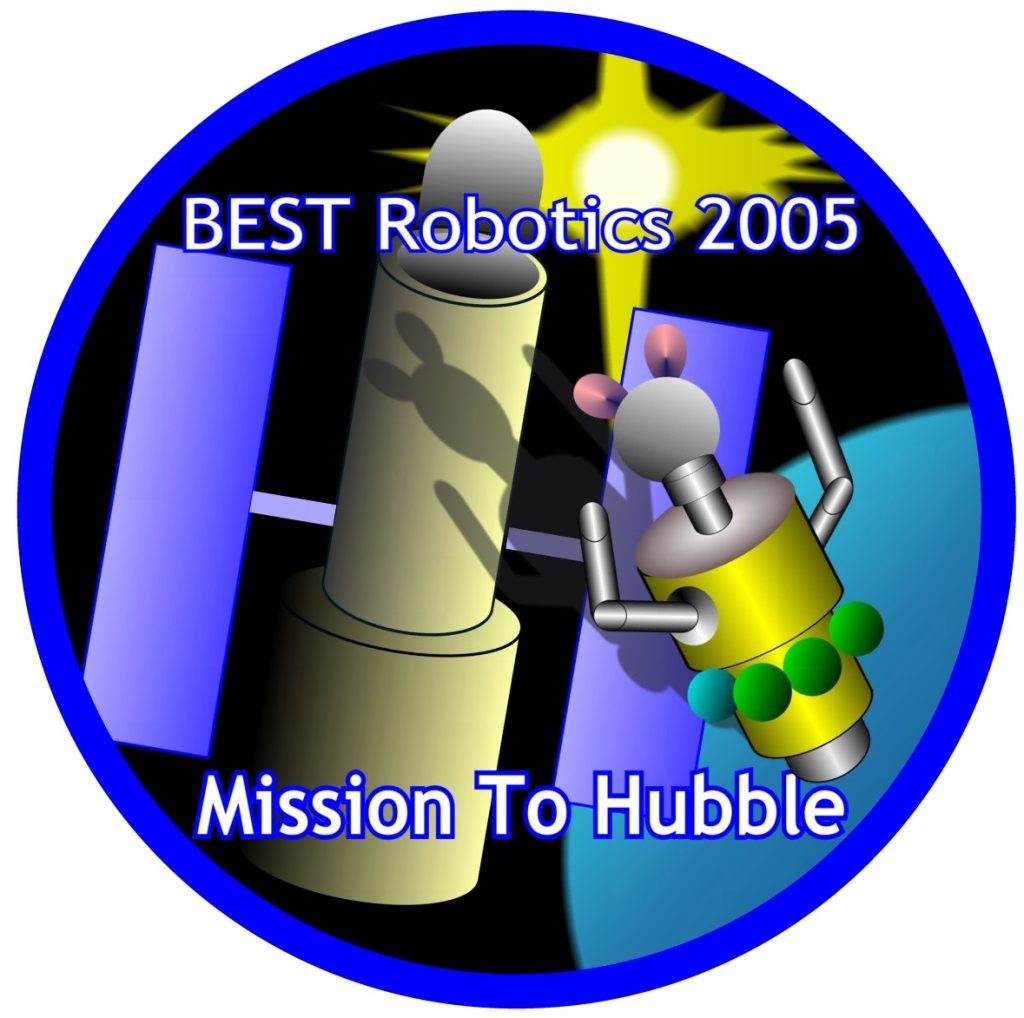In another unique change-up to typical game play, Ted and Steve (NT BEST) continued the tradition of BEST creativity. Following Ted’s passion for space travel, and NASA’s announcement in 2004 for the need to again service the aging Hubble Telescope, they designed an incredibly relevant game with a few new ideas:
- More involvement by the spotter (i.e., the supporting student on the field that doesn’t control the robot).
- Two students were required to participate to move the robot in this game. A manual movement and an remote control movement.
- Automated scoring built into the field. Automatic detection of game piece movements (removal and insertion) into field receptacles.
It was another leap forward in out-of-the-box thinking for game design. More student involvement, more activity, real-time scoring, more excitement! Plus the Hubble telescope sitting in a gymnasium looke REALLY cool!

The Premise
Could it really happen? Could a powerful telescope actually be placed in a location only dreamed about by astronomers and scientists, a location where its view of the heavens would be free of the distorting effects of Earth’s own atmosphere? Not since Galileo first used his simple optics to peer into the heavens has a telescope promised to so dramatically change our view of the universe. On April 25, 1990 the dream became reality as NASA, using the space shuttle Discovery, deployed the Hubble Space Telescope.
But as the first views were received the engineers and scientists knew something was wrong; its vision was blurred. A massive and exhausting analysis traced the problem to a tiny flaw in the process used to make and test the mirror at the heart of the Hubble space telescope. Even as the problem was being identified, engineers began thinking about how it could be repaired, and a plan evolved. In December of 1993 NASA flew the Space Shuttle and its crew on a mission to add ingenious instruments that would correct the flaw. It was an amazing success and Hubble was able to open the window to discoveries beyond anyone’s imagination.
Over the years as the Hubble continued its mission, onboard systems aged and some even failed. But the Hubble is a unique spacecraft; from the beginning it was designed such that astronauts could repair it while it orbited the earth. On three additional shuttle flights the Hubble was repaired and updated by teams of skilled astronauts.

Students will be given the task of designing a robot capable of replacing the Hubble’s aging batteries and gyroscopes. Additionally, that robot must be able to attach De-orbit rocket engines to the Hubble to allow for a controlled reentry when its mission is finally concluded.
Students will not only design the robot, they will be required to control the robots during the mission itself. Only the BEST robots and only the BEST teams will succeed.
